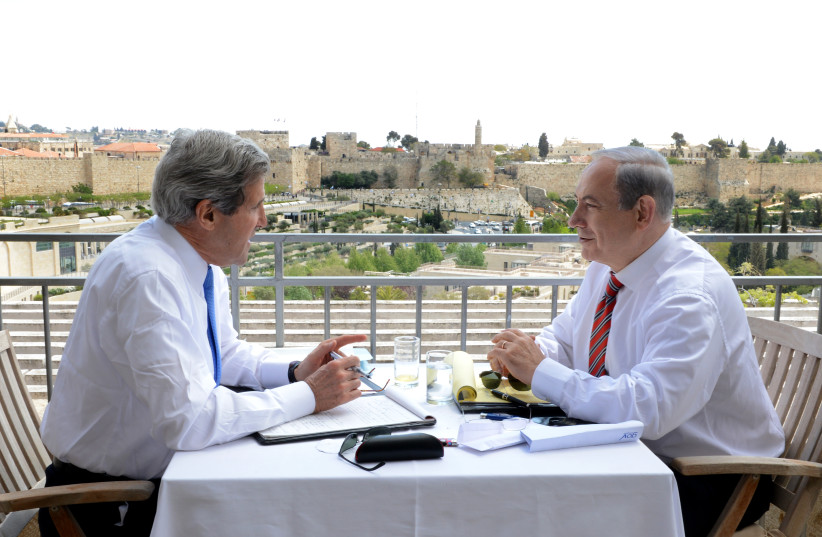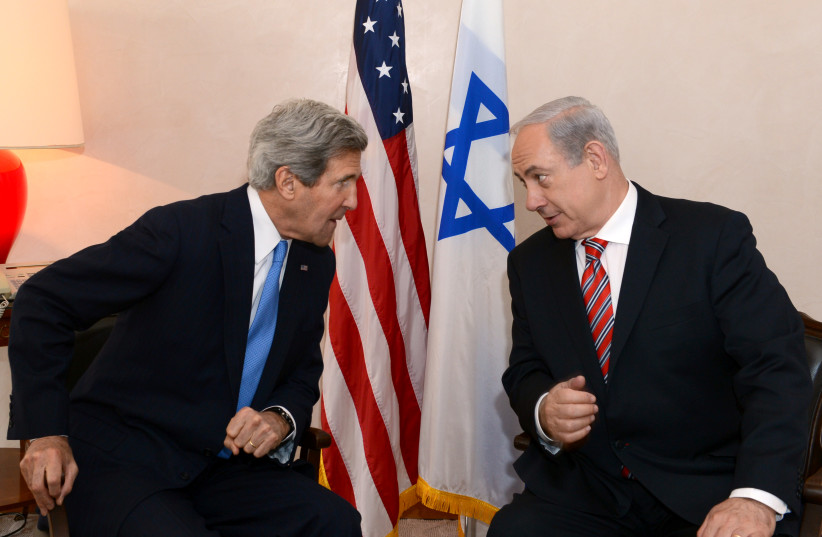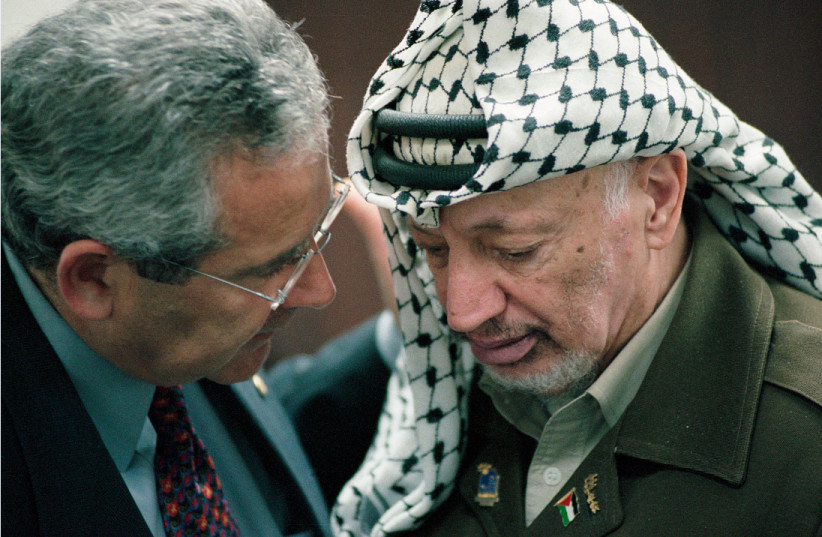Adorning the walls of Matty Stern’s crowded office in the US Embassy’s Public Diplomacy suite in a Tel Aviv office building are portraits of American dignitaries like Condoleezza Rice, Dan Shapiro, Madeleine Albright and David Friedman. They all contain handwritten notes, full of effusive thanks and superlative praise for Stern.
As well they should. In his role as the embassy’s staff photographer over the last 47 years, the 70-year-old Stern was tasked with chronicling their time in office – as well as presidents and other top-ranking US officials who visited Israel. And, just as importantly, he was mandated with presenting them in the best possible light, a challenge he evidently succeeded at.
“Matty Stern was an integral player in our diplomatic efforts. He helped us tell our story with beautiful images that often spoke in a manner more compelling than words,” said Friedman, Donald Trump’s envoy to Israel. “And his wonderful irreverent personality made every day full of fun and disarmed all our challenges.”
Along with his trusted Nikon camera, Stern has been present at virtually all the pivotal events in US-Israel relations since 1975, from Egyptian president Anwar Sadat’s unprecedented visit to Jerusalem in 1977 to the ceremony marking the transfer of the US Embassy to the capital in 2018.
Despite the historic significance of the events and the proximity to some of the world’s most powerful figures, the affable Stern says he has never felt intimidated or starstruck.

“During my first year on the job, Henry Kissinger visited twice as secretary of state to see Moshe Dayan. I was the greenest of green, and all the press was intimidated by Dayan,” said Stern, who possesses a well-developed flair for storytelling.
“All the networks and bureaus were in Dayan’s office for a photo op, and the ringleader was Meir Gregor from ABC, who was a great photographer but a bit of a wild man.
“He shouted out, ‘Can we have a handshake?’ and Dayan snapped at him, ‘I’m the boss here.’ Then, of course, he shook Kissinger’s hand.
“Afterward, Meir said to me, ‘Matty, listen. All of them are human just like us, and they want us to make them look good. They’re no different than anyone else.’
“That advice always stayed with me from then on.”
A TEL AVIV native with parents who fled Germany and Poland before the Holocaust, the married father of four (none of them photographers) began his love affair with photography as a teenager, after an uncle gave him his first camera.
“My father also took pictures as a hobby, and we set up a darkroom, and I spent a lot of time taking photos of people. I never liked to take scenes or views. Even then, I liked to concentrate on people and moments, actions, reactions and emotions. And that continued into my career. I don’t like posed handshakes,” he said.
After completing his army service and graduating from the Technion-Israel Institute of Technology, where he studied technical photography, he had worked for a short time in a Tel Aviv film studio when he got a call from a contact in the US Embassy. Then-president Gerald Ford had installed a new envoy, Malcolm Toon, who decided that the embassy in Tel Aviv needed a full-time photographer.
“I got in because I was friends with this officer in the embassy, and we had a short interview chik chak and he said ‘Matty, you want a job?’ I had to go through security clearance as a non-American, and started working in 1975, and the rest, as they say, is history. We set up a darkroom and began to run with it.”
Stern experienced some of his most exciting moments working under Toon’s successor, Sam Lewis, who was integrally involved in the negotiations between Israel and Egypt that led to Sadat’s visit and the peace agreement.
“Back then, I had a free hand, and there were very few restrictions. I learned that to take the best photos, I had to know my subjects well. And that’s how I got close to the ambassadors I worked for.”
However, that closeness could occasionally result in photographs seeing the light of day which would have been better off kept in the dark.
“Sam Lewis had acquired the affectionate nickname ‘the High Commissioner’ during his posting,” recalled Stern.
“One year, the embassy held a Mardi Gras event at the ambassador’s residence. Lewis dressed up like a king, with a crown and scepter, and a big cape that his wife, Sally, held. He made a grand entrance and I captured the photo.
“The cultural attaché at the time approved its release to the media, even though I told her it could create a problem.
“The next morning, it appeared everywhere. I got an angry call from her boss, and after hanging up, I ran into the attaché’s office to warn her. But I was too late. She was already turning red on the phone.
“These days, there are so many more levels of scrutiny that would prevent a photo like that from being released. It’s not as much fun though.”
But it is fun, and gratifying for Stern, when he captures a moment when the facial masks of diplomacy come down and his subjects project their true feelings.
He points to shots of both former prime minister Benjamin Netanyahu and Barak Obama’s secretary of state John Kerry during a particularly tense meeting as a prime example.
“That photo wasn’t posed. You don’t have to explain anything; it’s all there. Do you see Kerry’s hand?” he asked, pointing to the secretary’s fist balled up against the chair.
“It’s the same with Netanyahu and [former US president Donald] Trump,” he said, referring to a photo of the two leaders scrunched together in a hard glare. “Look at their eyes.”

“The best photos emerge when the subjects are ignoring the photographer, acting normally. I like to be hidden, like a fly on the wall, which is impossible today with the noisy shutter clicks. I try to catch people in action and in reaction,” he said, pointing to a photo of then-PLO leader Yasser Arafat in deep discussion, nose-to-nose with Gamal Helal (an Egyptian-American interpreter and diplomat who translated on behalf of multiple presidents and secretaries of state).
“Clinton was trying to convince Arafat to come to the Camp David talks, and I didn’t know at the time if had a good shot,” he said. “You concentrate on the main subject, but there are other things happening that you’re not aware of until later when you see the photo.”

He pointed to another photo of Albright and US negotiator Dennis Ross and their staff ahead of a meeting with prime minister Ehud Olmert.
“I was focusing on Dennis and didn’t see the expressions and posture of the others. These are scenes that normally a photojournalist wouldn’t be allowed such close access to. You try to create a trust, and this is what happens.”
AS STERN readies to retire at the end of the year, some of his most iconic photos are going on display in the first exhibit of his work.
Titled “Meeting Point: Diplomacy – 47 years of US-Israel Relations as photographed by Matty Stern,” the exhibit premiered this week at the PHOTO IS:RAEL-sponsored 9th International Photography Festival at the The Daniel Rowing Center in Tel Aviv’s Hayarkon Park and is continuing through November 27.
It was curated by Kineret Palti and features not only Stern’s shots of political leaders and officials, but performance art photos of Americans who have been brought to Israel by the US government.
“It wasn’t my idea at all; it was the idea of Polina Eskenazi from our cultural section. After she got approval from the embassy officials, she came to me and said ‘We’re going to do an exhibit of your photos,’” said Stern.
“She had already gone through a lot of photos, looking for never-published shots and behind-the-scenes photos. I chose some, and she chose some that I never would have thought of. We got it down, little by little, to 500, then 100. The final tally is 28 prints, and another 34 which will be on-screen in a loop.”
One photo in the exhibit that Stern is particularly proud of is of Netanyahu and Kerry, sitting in their shirtsleeves on the terrace of the David Citadel Hotel with the walls of the Old City in the background.
“Kerry didn’t like big meetings; he liked tête-à-têtes. That day in the hotel, he and Bibi took off their jackets and were actually working at the table.
“One of Kerry’s advisers said to me, ‘Be ready, we might bring you in to take a shot.’
“It was just me and Netanyahu’s photographer. I said to Bibi, ‘Please, Mr. Prime Minister, look at the secretary and ignore us.’ The resultant photo was never published, but I think it’s one of the best photos I’ve taken.”
Regarding the exhibit, Stern said “It’s a nice present for my release from service,” adding that he stayed on the job an extra three years beyond retirement age because of one person – Donald Trump.
“The minute he was elected, I said to myself, I have to stay. I don’t know what this is going to be, but it’s going to be something out of this world, very special. And it turned out to be very exciting.”
That word typifies most of Stern’s illustrious career providing an eyewitness view of history. He pointed to Sadat’s visit to Jerusalem and the move of the US Embassy to Jerusalem as the cornerstones to a career that has witnessed some of the most cataclysmic events in Israel’s history.
Having successfully documented those events for posterity, he’s now ready to leave the world of diplomacy, but not photography.
“I want to go to Africa and photograph animals. I did it once, and I’m ready to go back.”
Whether he finds them more amenable subjects than the humans he’s scoped through his lens for the last 47 years remains to be seen. But one thing is for sure: he’ll make them look good. ■
